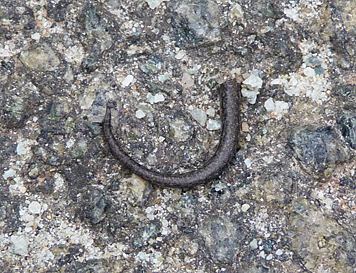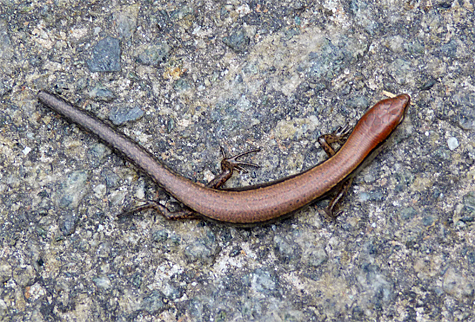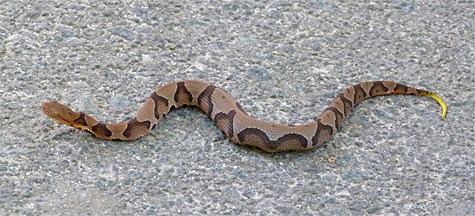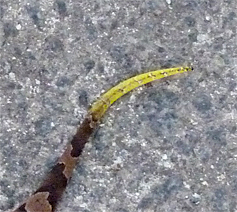As I walked towards the Butterfly House on my way to my office, I noticed a small group of young children looking down at the ground and laughing, there must be something interesting over there.
I approached. Lying on ground in the center of a circle of four or five squatting children, was a small U-shaped object. The object moved, wiggled. It was the tail of a skink. A few feet away was the skink itself, the lower third of its tail missing. It was a ground skink.

Ground skinks are small, and this was a small ground skink, hatched this year. I never did find out how this particular skink had become separated from its tail (the kids were quickly off on some new adventure), but it’s a common trait among lizards to lose their tails, better than losing your life. The tail, once separated, still wiggles and waggles, attracting the attention of the predator that initially caused the separation in the first place. The skink scoots off while the predator plays with the wiggling appendage. The tail later grows back.

Quite coincidentally, at this same location a few days earlier another reptile with a rather unique tail arrangement was seen. I heard a call on the radio that there was a “baby” copperhead on the path near the Farm Yard. I was there in a flash. It was indeed a young copperhead, about 9 or 10 inches in length.


Young copperheads are the only snakes in our immediate area that have yellow, or yellow-green, tails. Young cottonmouths also have yellow tail tips, but they are not found locally. If you see a small snake that looks like its tail has been dipped in mustard, you’ve just seen a young copperhead. Stay clear of the snake, but appreciate the experience.
The weather is getting cooler, so most snakes will be out of sight before long. I last saw a water snake on October 11 but had heard about one being seen on the fourteenth. However, it’s not too difficult to find a brown or garter snake during our relatively mild winters, but those are tales for another time.
Have fun!